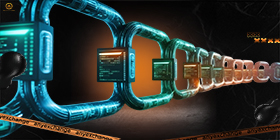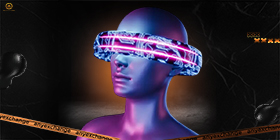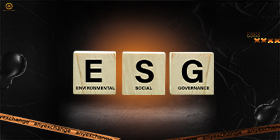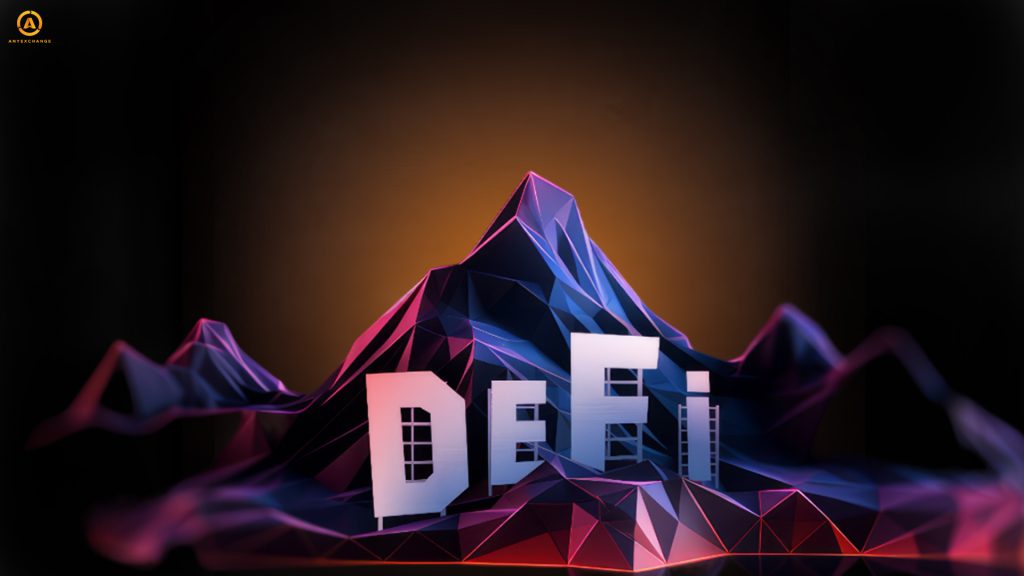
DeFi trends exist inextricably linked to trends in blockchain technology and the cryptocurrency market. According to analysts, after last year’s recovery period, the cryptocurrency, blockchain and Defi markets are expected to take off. The laws of market cyclicality and the prevailing market trends predict the rapid development of decentralized financial systems in 2024.
Let’s take a look at what DeFi and the blockchain economy are all about, the extent of DeFi’s impact on traditional finance, and what the future may hold for the DeFi market sector and its related products.
The concept of DeFi
DeFi (decentralized finance) is a sector of the cryptocurrency market that uses blockchain technology to provide financial services as an alternative to the traditional financial systеm. Transactions in DeFi are completely anonymous and do not require the involvement of an intermediary, as they are conducted through protocols that connect users directly to each other. Anyone using the internet can interact with the ecosystem and manage assets.
Decentralized systems eliminate the need for centralized management structures, as all the rules of transactions are defined in smart contracts. All that is required is to launch the contract, and then the DeFi application works independently or with minimal user involvement. Decentralized solutions accelerate the financial transaction process, eliminate a single point of failure, and reduce associated costs.
DeFi vs CeFi
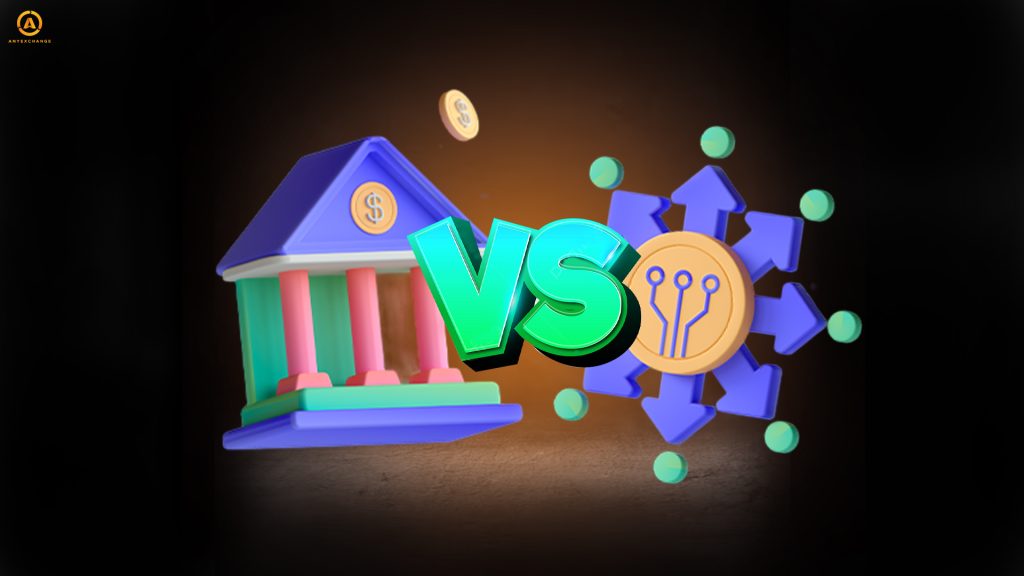
The main goal of decentralized finance is to become an alternative to the traditional centralized financial systеm (CeFi), where third parties control all financial assets and transactions, while DeFi creates an ecosystem where participants can interact directly. In 2023, three times more venture capital funds were channeled into DeFi than into the traditional CeFi market (18% and 6%, respectively), indicating high investment expectations for the sector going forward.
DeFi and traditional finance share some similarities and distinct differences.
Key similarities between DeFi and CeFi:
Perhaps this is where the “similarities” end and the differences emerge, which allow the DeFi segment to successfully compete with traditional financial systems:
DeFi’s history of existence and its development in 2023
Data on the inflow of funds to the crypto market due to DeFi by TVL. Sources: CoinMarketCap and Ukraine Economic Outlook:
| Year | 2018 | 2019 | 2020 | 2021 | 2022 | 2023 (first half of the year) |
| Value locked inDeFi (TVL) | 0,0 | 0,6 | 19,8 | 310,1 | 68,9 | 89,1 |
Use of DeFi’s main instruments
Lending and borrowing
The lending and borrowing procedure in the DeFi world is much simplified compared to the traditional one. With collateral, everyone has access to capital by participating in liquidity pools. Examples inсlude Aave and Compound, where liquidity providers contribute assets to a pool and receive a fee, and borrowers borrow from that pool and pay interest.
Insurance
The systеm operates on the principles of a traditional systеm, and its purpose is to protect the user from losses they may incur as a result of a smart contract vulnerability or hacker attack.
Earnings from GameFi
Platforms such as Axie Infinity and The Sandbox, which combine DeFi, NFT, game tools, and smart contracts, allow users to earn rewards and utilize resources in the in-game economy using blockchain technology.
Trading on Decentralized Exchanges (DEX)
DEXs allow you to trade cryptocurrencies without intermediaries, conducting transactions directly between accounts. They do not require registration and verification, only wallet synchronization with a smart contract is needed.
The role of Ethereum
Ethereum continues to lead the way in terms of the number of DeFi projects deployed on the blockchain. It was the Ethereum team that pioneered the smart contract revolution by creating the first protocol running on this technology. According to DeFi Llama, in 2023 TVL in Ethereum-based DeFi projects exceeded $30 billion (more than 50% of the total in the sector). At the same time, Ethereum is experiencing certain difficulties with scalability and lower transaction fees. Therefore, alternative networks such as NEAR, Avalanche, Tron, Solana, or Arbitrum are gaining popularity.
The future of decentralized finance
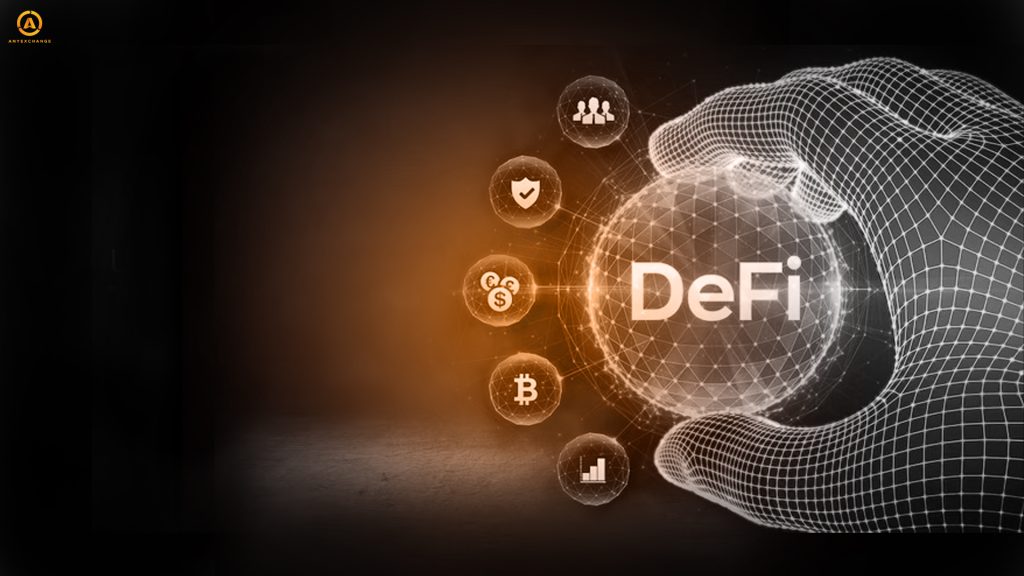
The growth dynamics of the DeFi markets and the trends we can observe show us that decentralized finance will become an integral part of the global economy in the near future. The market expects DeFi to simplify transactions even more; many countries (including Ukraine) are preparing to issue digital currencies; DeFi-based payment gateways already perform transactions in seconds. DeFi 2.0 is under active development and real-world asset (RWA) tokenization is gaining momentum.
Of course, regulatory pressures and the risks of fraud and hacker attacks must be addressed for the industry to evolve further. However, the risks and opportunities of DeFi are not comparable.
Most analysts predict a strong influx of funds through the institutional adoption of cryptocurrencies for portfolio management following the approval of spot ETFs and bitcoin halving. Either way, markets are cyclical by nature, and the crypto spring is just around the corner. That means we can expect the decentralized finance market to surge in the coming months.
Thank you for your attention!
Through our cryptocurrency exchanger , you can make a conversion at the best exchange rate . Worldwide money transfers are also available on the site with both electronic money and cash.


